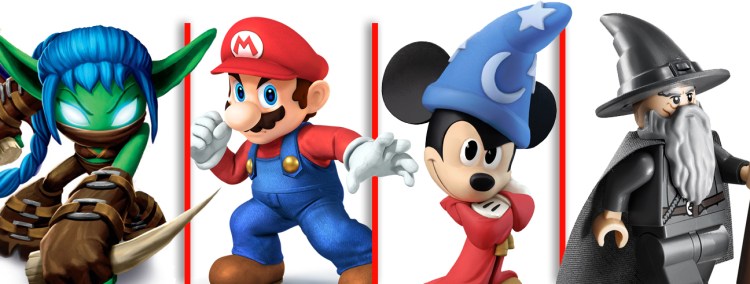Pricey plastic
Why have games like Skylanders and Disney Infinity grown? Because one study found parents spent $131 on toys-to-life products over a six-month period.
Toys-to-life is working wonders for publishers’ profits, but can prove complex for families to find best value. Here’s what matters to the families I’ve worked with.
While the recent trend of tying kid’s video game characters and levels to toy purchases has turned strong profits for publishers, it has also increased the complexity of finding the best value purchase for families. Industry watcher Andy Robertson assesses the state of the Toys to Life genre in 2015.
The toy-game hybrid trend came about when Activision introduced Skylanders in 2011, broadened with Disney Infinity in 2013, and this year sees the arrival of Warner Bros’ Lego Dimensions. Nintendo’s Amiibo chart the same seas but with figurines that function in multiple games.
This “Toys to Life” category extends beyond consoles to tablets and smartphones with Disney Infinity and Skylanders supporting both iOS and Android. Anki Overdrive extends the toy-tablet gaming with physical robotic cars that bring the action into the real world. Disney Playmation stretches things further with Avengers, Star Wars, and Frozen wearable tech for kids that creates physical play challenges.
Throughout, the dividing lines between toys, video games and outside play are being rewritten. This year’s crop further tweaks the balance between costs and benefits to players, as each jostles for position in an increasingly crowded genre.
Skylanders: Superchargers
Skylanders’s developer this year is Vicarious Visions, who returns to the helm after 2013’s Skylanders: Swap Force. Skylanders Superchargers adds an array of vehicles, like cars, that enable players to unlock and customize fantasy modes of transport.
This expands the value of the physical toys by offering more than just collectable figurines that might sit on a shelf. The vehicles are each articulated and come with matching drivers. Although the figurines don’t fit in the physical vehicles as they do on the screen, by doing away with the need for a circular stand, the toys are instantly more fun to play with.
In terms of value, Skylanders offers excellent backward compatibility. Every existing Skylanders character works in the new game and can drive the vehicles. Also, all of the previous Skylanders USB Portal peripherals send the characters into the game. This means that existing Portal owners can simply download the cheaper digital version and play for a fraction of the cost.
Finally, kudos for ongoing support of the Wii — derided as outdated by many gamers but still a popular platform for families. This year’s Wii and 3DS games are complementary experience and look to offer some sort of kart racer experience with their Skylanders Superchargers Racing moniker.
Disney Infinity 3.0
Disney has the Star Wars franchise to roll out in toy-game form this year and could have sat happy in the knowledge that this would sell itself. Happily, it’s not relied on the strong brand alone but improved the game in a number of areas.
Ninja Theory brings some triple-A development clout to improve the combat in the Twilight of the Republic adventure. Studio Gobo continues its good work with the Rise Against the Empire, and Sumo Digital brings it menagerie of racing skills to bear in a Disney Infinity Racing experience. These various improvements to combat, racing, and platforming each focus on a specific part of the game but apply enhancements throughout.
As ever, the killer feature for Disney Infinity is the Toy Box game creator. While families may find it frustrating that only certain characters can be used in certain playset adventures, they can combine any and all of them in the game creator mode.
The biggest negative here is the way Infinity uses its banner Star Wars original trilogy content at launch. The only way to buy the Rise Against the Empire playset and characters like Luke and Leia is the high-ticket Saga Edition ($114.99), as opposed to the standard ($64.99) starter pack. This forces families who want to get in early to buy both Star Wars playsets rather than pick their favorite — or exercise some patience.
More positively, there is a digital version for players who already own the Infinity Base USB device used to read the figurines into the game. Most retailers will offer this and a Play-Set at a discount price, making it the value route for players. Also, this grants an affordable route to access the non-Star Wars content like the Inside Out and Ant-Man adventures.

